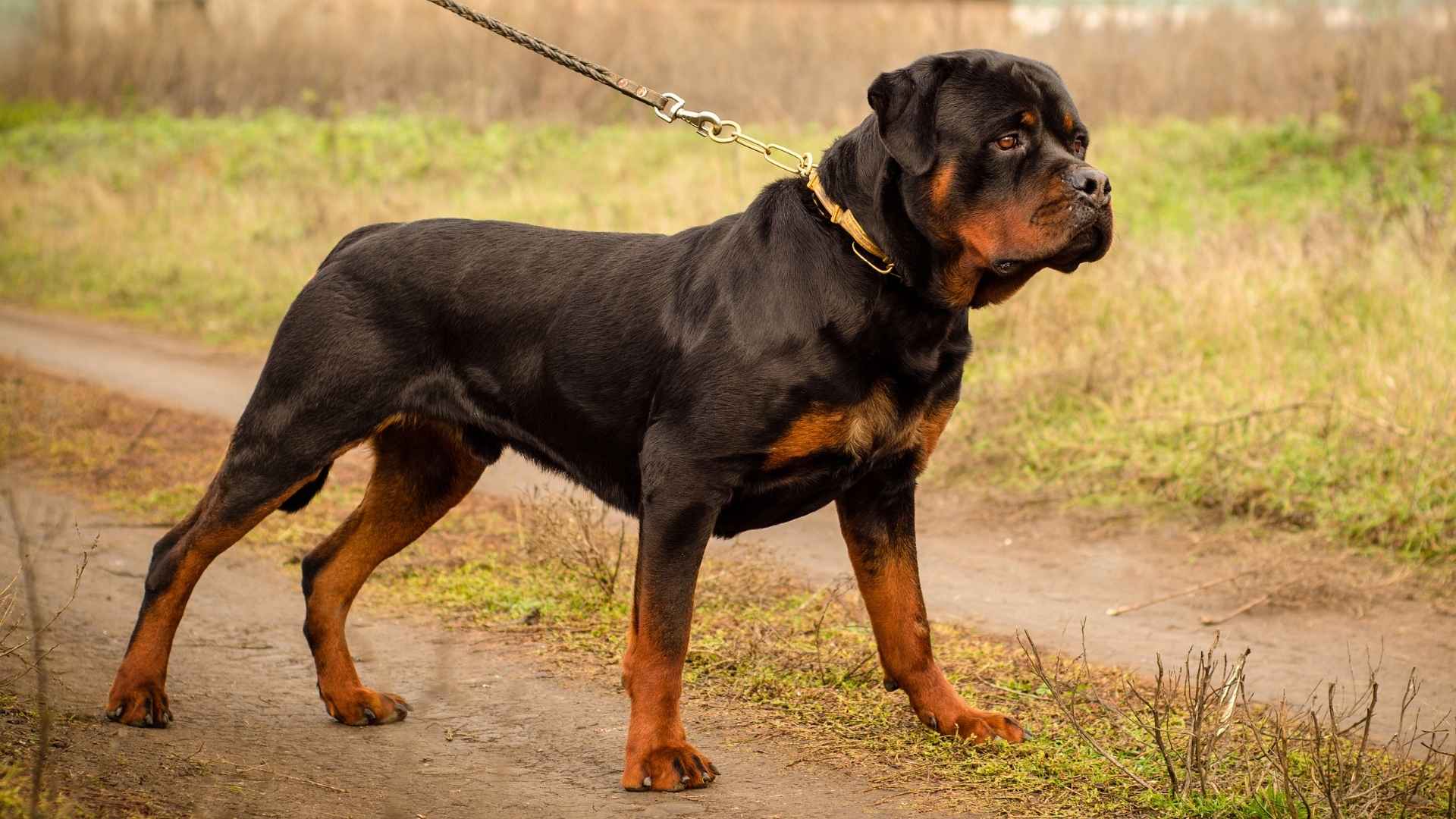Some dogs are naturally equipped with the courage, loyalty, and intuition needed to protect their families and property. These guard dog breeds are more than just barking alarms—they have strong instincts to sense danger and act when necessary. Whether you’re seeking peace of mind in a suburban home or added security in a rural setting, the right guard dog can be both a devoted companion and a reliable protector.
Guardian breeds are typically large, strong, and watchful. They are known for their protective nature and ability to stay calm under pressure. With proper training and socialization, these dogs don’t just defend—they become cherished family members. Many are affectionate and gentle with children, forming tight-knit bonds with their humans while staying alert to any unfamiliar presence.
From livestock guardians bred to watch over sheep and cattle, to powerful breeds trained to guard homes, the best guard dogs bring a sense of safety wherever they go. In this article, we’ll explore the top breeds that balance loyalty, strength, and intelligence—true protectors at heart.
Best Guard Dog Breeds
1. Bullmastiff
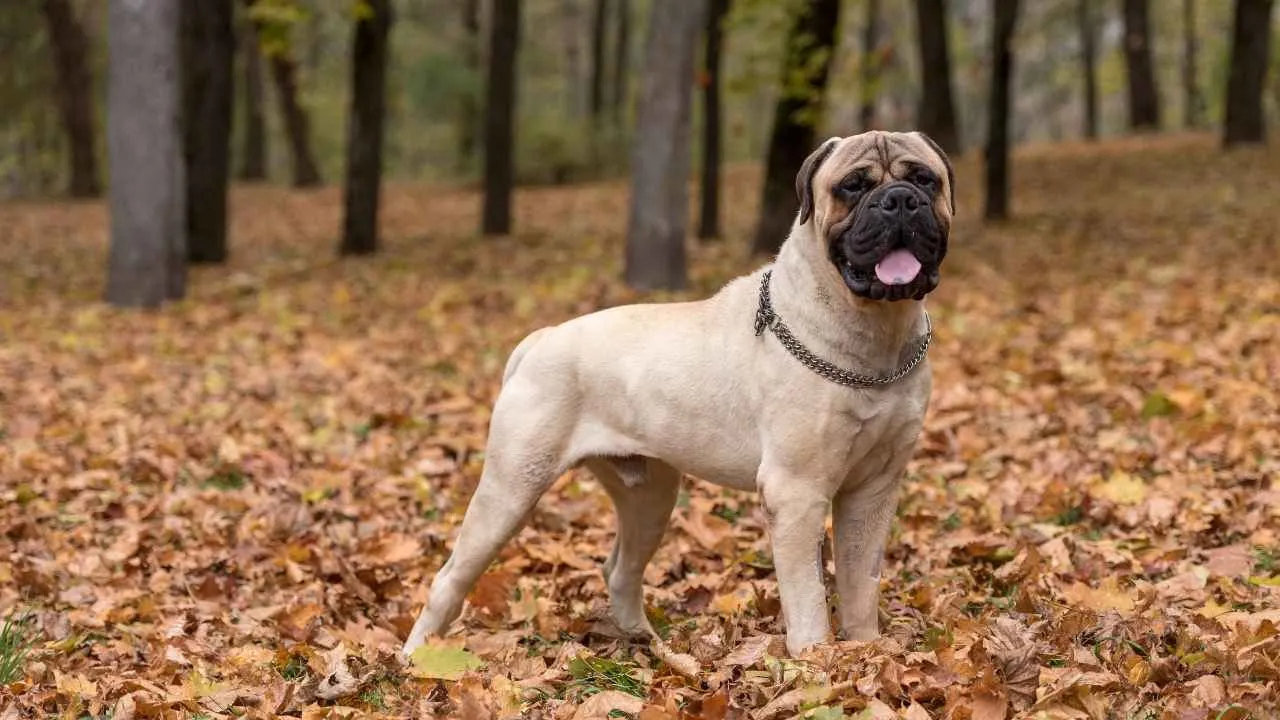
Powerful yet affectionate, the Bullmastiff—often referred to as the “silent watchdog”—is a large breed developed in 19th-century England by crossing Bulldogs with Mastiffs. According to the AKC, the Bullmastiff is a powerful and courageous guardian.
Gamekeepers originally bred them to track and pin down poachers without mauling them. Males stand 25–27 inches tall and weigh between 110–130 pounds, while females are slightly smaller. With a short, dense coat in fawn, red, or brindle shades and a black mask, their imposing stature alone deters intruders. As members of the Working Group, Bullmastiffs typically live 8 to 10 years.
Naturally protective, these dogs are fearless defenders of their home and family, often charging toward perceived threats with intimidating speed. However, they are quiet by nature and form deep emotional bonds with their humans.
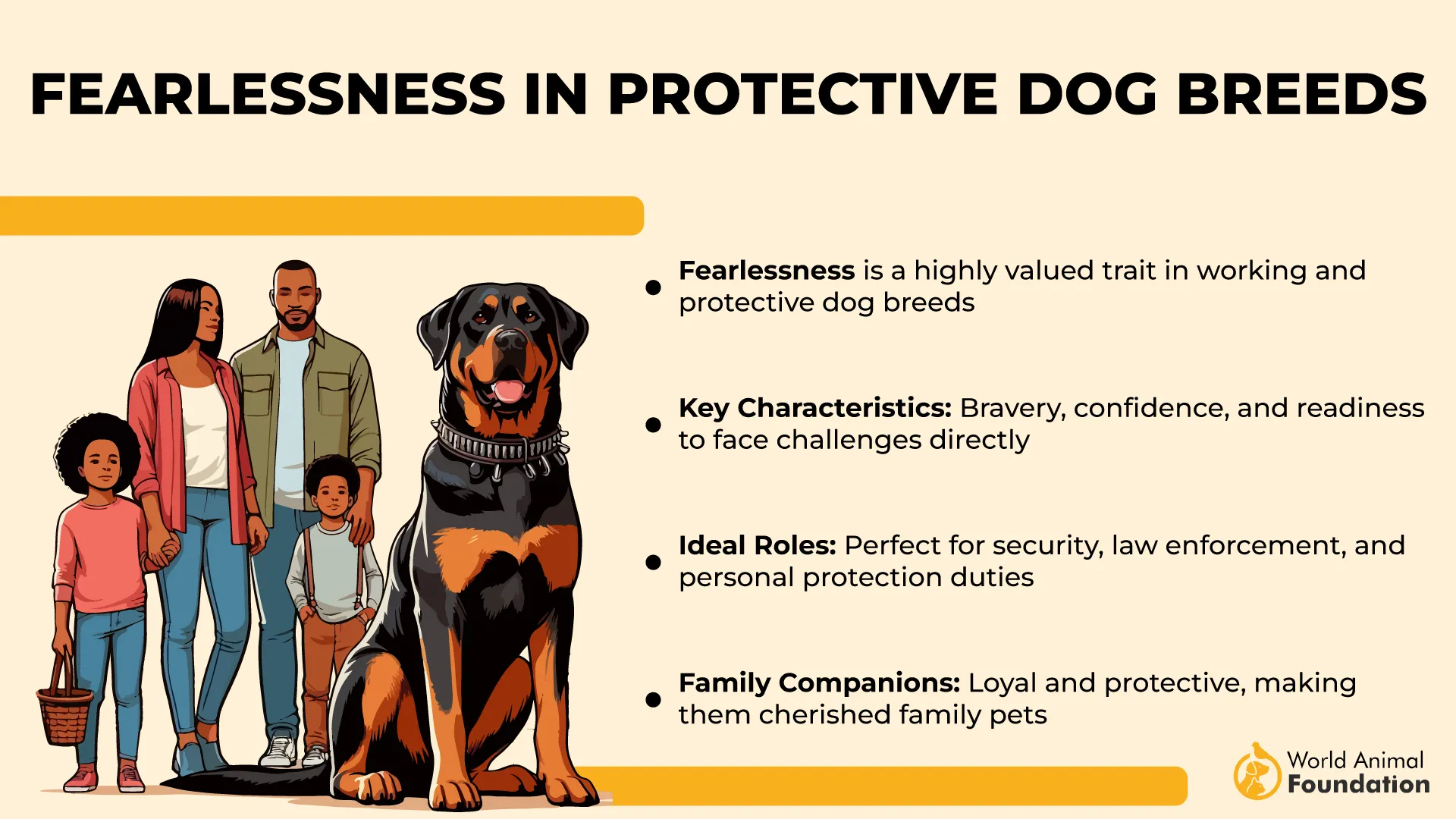
Proper socialization and early obedience training are essential to channel their strength and guard instincts positively. They become great guard dogs. Without adequate exercise and mental stimulation, Bullmastiffs may develop destructive habits due to boredom or anxiety.
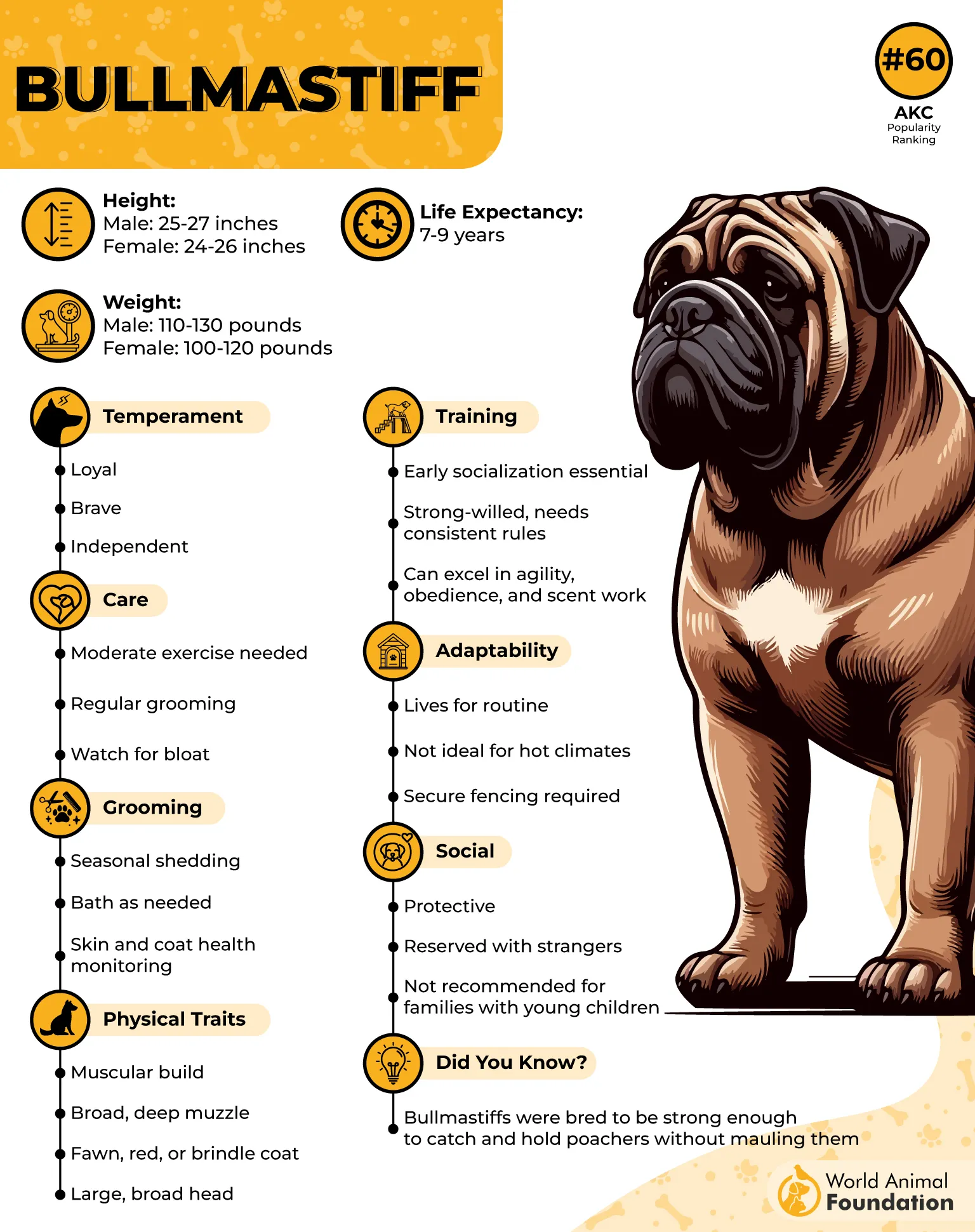
Ideal Owner
Bullmastiffs are best suited to experienced dog owners with time to invest in consistent training and engagement. Ideal for families with older children, they thrive in homes with secure outdoor space and benefit from structured routines. First-time pet parents or those without time for early training may struggle with this strong-willed breed.
Fact: Bullmastiffs were once known as “Gamekeeper’s Night Dogs” for their role in deterring poachers across English estates.
2. Belgian Malinois
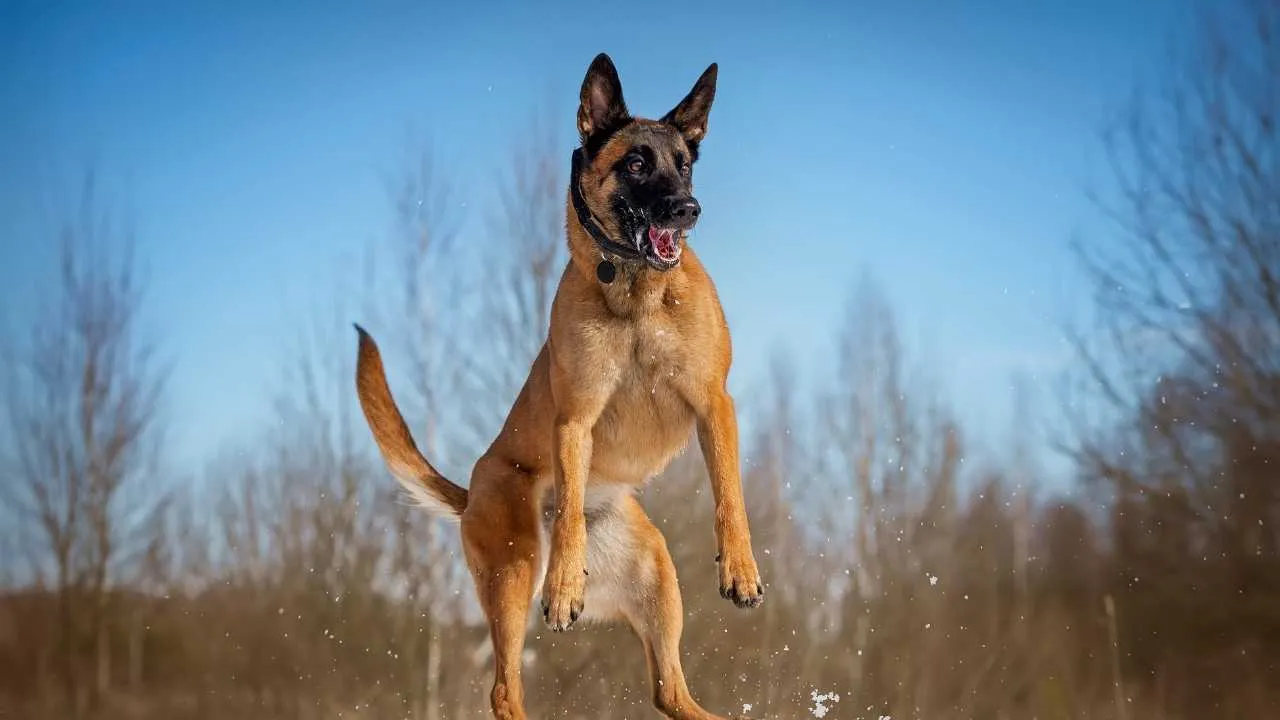
The Belgian Malinois—also referred to simply as the Malinois—is a herding breed developed in the Malines region of Belgium. Originally bred to guard and herd livestock, this sleek and athletic dog now serves widely in police and military K-9 units around the world.
With a weight ranging from 50 to 80 pounds and a height of 22 to 26 inches, the Malinois boasts a short double coat in fawn to mahogany shades, highlighted by its signature black mask. Known for their boundless energy, intelligence, and agility, they belong to the Herding Group and typically live 14 to 16 years.
The Malinois thrives when it has a job to do—be it tracking, agility work, or guarding property. Their sharp instincts and trainability make them world-class protectors, though their strength and drive require structure, socialization, and specialized guidance, especially around other animals or strangers.
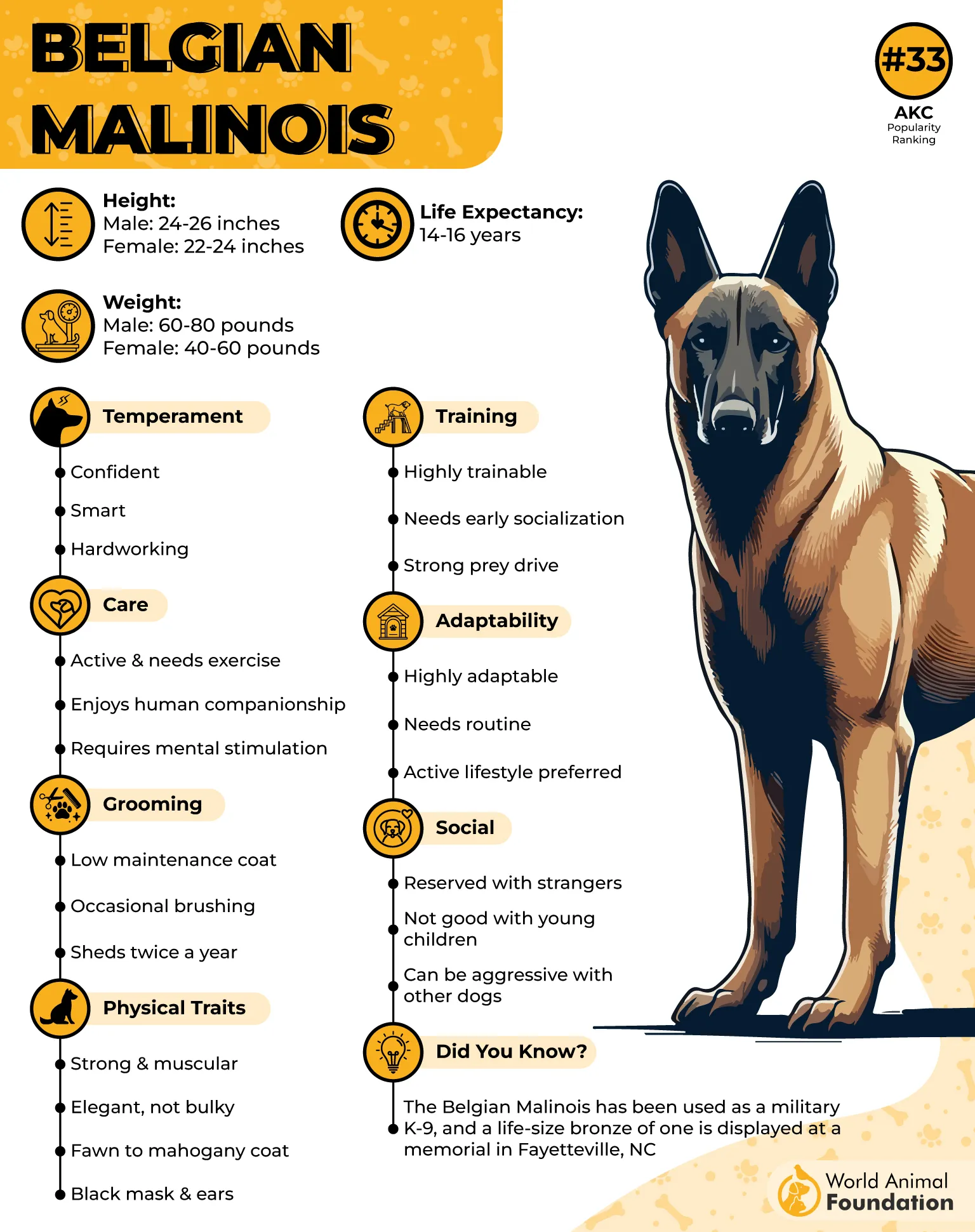
Ideal Owner
They excel with handlers who can commit to structured routines and challenging activities like hiking, advanced obedience, or canine sports.
WebMD states that Belgian Malinois dogs are intelligent and highly trainable, making them well-suited for active and experienced owners. This breed is not ideal for households with small children or sedentary lifestyles.
Fact: A Belgian Malinois named Cairo famously helped SEAL Team 6 during the raid on Osama bin Laden’s compound.
3. Staffordshire Bull Terrier
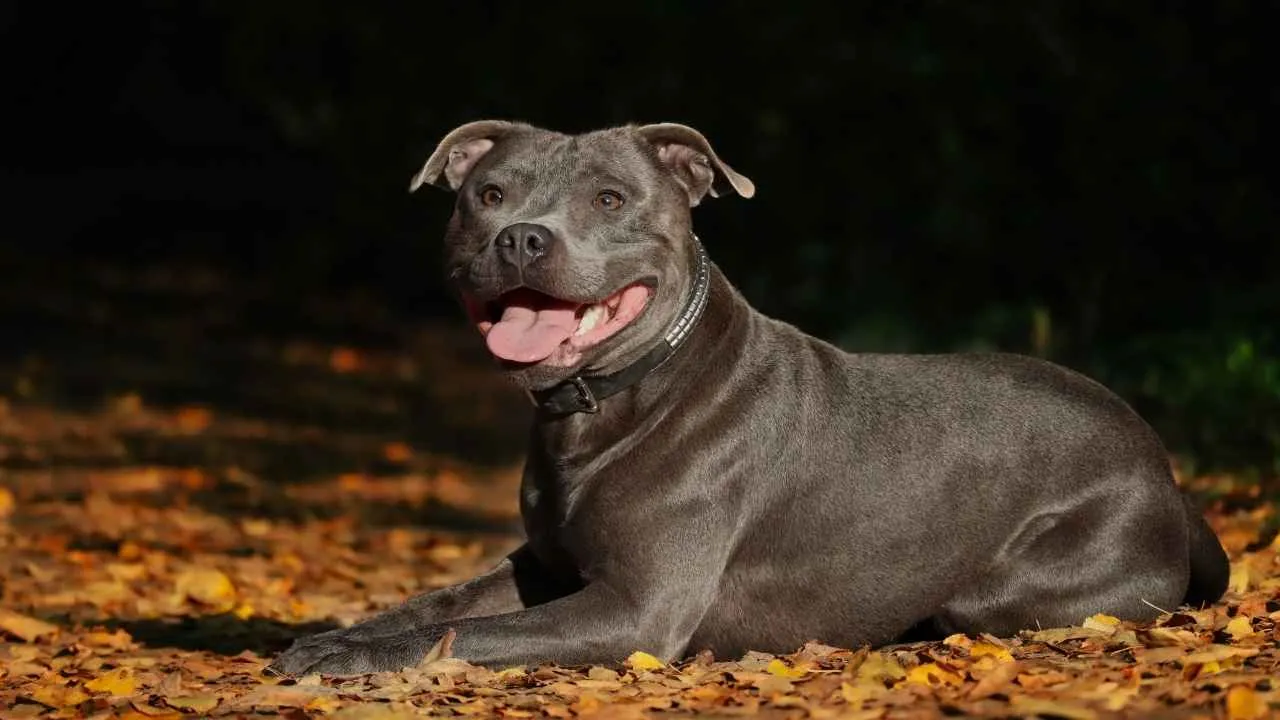
The Staffordshire Bull Terrier—commonly known as the Staffy, Staffie, or Stafford—is a compact, muscular terrier originally bred in 19th-century England by crossing Bulldogs with various terrier breeds.
This breed was developed for bull-baiting and later dog fighting, but with time and responsible breeding, it transformed into a loving and loyal companion. PetMD emphasizes that they are muscular dogs with a playful nature.
Recognized by the AKC in the 1970s, the Stafford stands 14 to 16 inches tall, weighs between 24 to 38 pounds, and boasts a short, smooth coat in various shades, including red, fawn, black, and brindle. With a broad head, rose-shaped ears, and an expressive face, its tough looks belie a deeply affectionate soul. The breed typically lives 12 to 14 years and belongs to the Terrier Group.
Despite their past, Staffies are known today for their affectionate nature and fierce devotion. They are courageous and alert, and their innate loyalty makes them strong yet manageable guard dogs when raised with consistent training and early socialization.
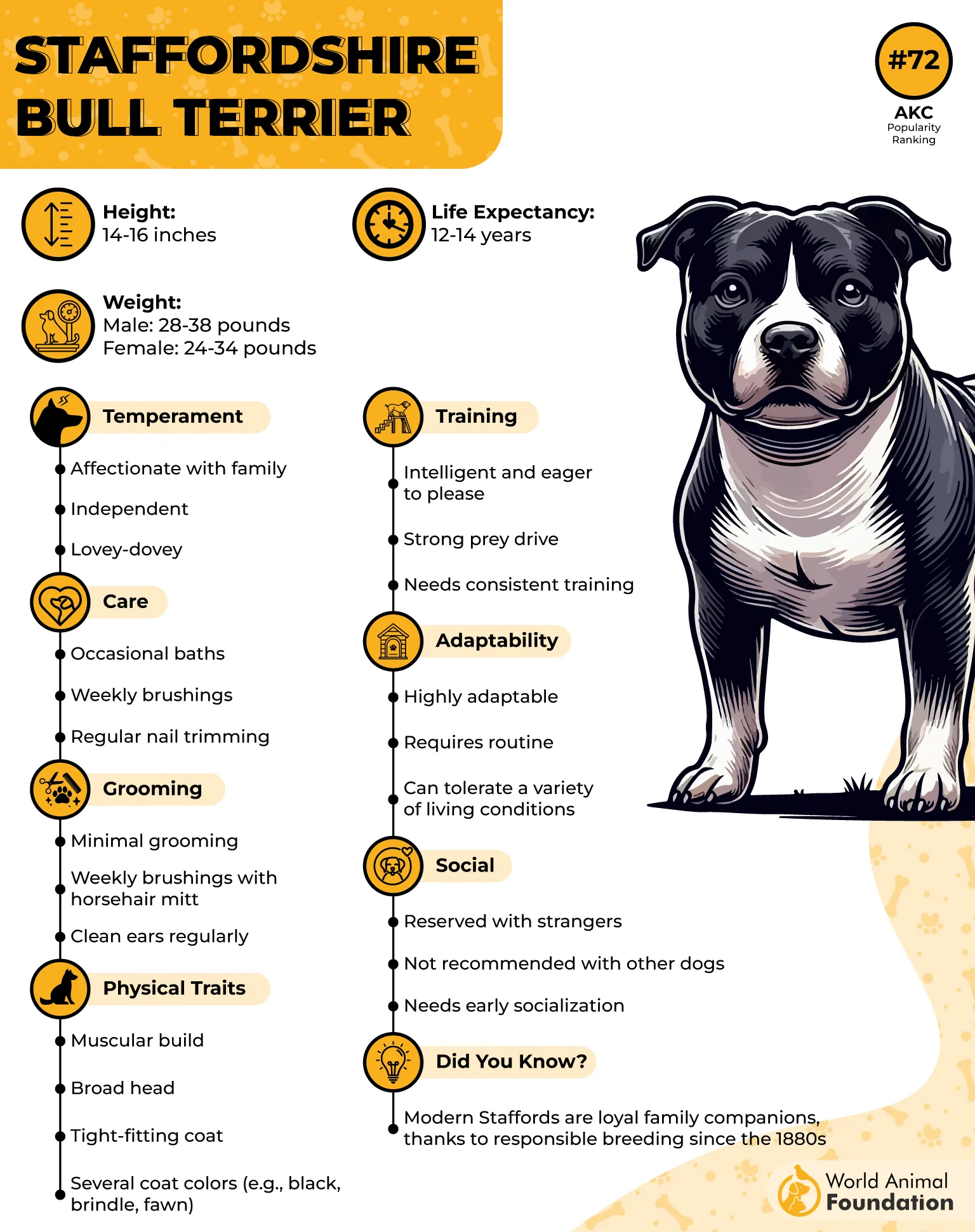
Ideal Owner
Staffordshire Bull Terriers are best suited for confident, experienced dog owners who can commit to structured training and active lifestyles. They thrive with families who offer constant companionship and early exposure to people and pets, especially in homes where children are treated as part of the pack.
Fact: Despite their history, Staffordshire Bull Terriers are affectionately known for their “nanny-like” temperament around children.
4. Cane Corso
The Cane Corso—also known as the Italian Mastiff or Cane Corso Italiano—is a large and assertive working dog bred for protection. With a commanding presence, this muscular breed stands 23.5 to 27.5 inches tall and weighs between 90 to 110 pounds.
Descended from the war dogs of ancient Rome, the Corso later served as a versatile guardian on Italian farms, herding livestock and warding off predators. Its short, coarse coat comes in black, gray, fawn, and red, sometimes with brindle patterns and a mask. Recognized by the AKC in 2010, it now belongs to the Working Group and lives approximately 9 to 12 years.
A natural protector, the Cane Corso is fearless yet deeply devoted to its family. Its alert demeanor, imposing size, and low, rumbling bark deter intruders instinctively. While noble and intelligent, this breed demands purposeful training and early socialization to balance its strong guarding instincts with controlled behavior.
Ideal Owner
Cane Corsos are best suited to confident, experienced owners who can provide consistent leadership and invest time in structured training.
They thrive in homes with secure outdoor space and do best with people who understand large, assertive breeds. First-time dog owners may find this breed overwhelming without prior handling knowledge.
Fact: The name “Cane Corso” translates from Latin as “bodyguard dog,” a nod to its ancient Roman heritage as a war and estate guardian.
5. Boxer
The Boxer, also known as the German Boxer, is a striking working breed that originated in 19th-century Germany. Bred from the Bullenbeisser and crossed with Mastiffs, Bulldogs, and possibly Great Danes, this muscular dog was initially used in bull baiting and cattle management.
Males stand between 23 to 25 inches tall and weigh up to 80 pounds, while females are slightly smaller. With a short, smooth coat—usually fawn or brindle with white markings—and an expressive face marked by a broad forehead and dark eyes, Boxers are both intimidating and endearing. Life expectancy ranges from 10 to 12 years.
Boxers make highly capable guard dogs when given proper training from an early age. Their natural loyalty, protective instincts, and courageous nature make them reliable defenders.
Though they may exhibit some stubbornness, consistent obedience training allows them to distinguish between real threats and benign situations. Their alertness, strength, and readiness to act under command equip them for both home defense and family companionship.
Ideal Owner
Boxers are best suited for active families or individuals who can offer consistent companionship and leadership. Owners who are present for most of the day—like remote workers or multi-person households—can meet the breed’s need for exercise, social interaction, and mental stimulation. Early socialization and firm, positive training are key.
Fact: Boxers were among the first breeds used as police dogs and are known for their unwavering loyalty and child-friendly temperament.
6. German Shepherd
Also known as the GSD, the German Shepherd is a large, muscular breed originally developed in Germany in the late 19th century by Captain Max von Stephanitz to herd sheep. Today, this noble and highly intelligent breed is renowned as an elite working dog across military, police, and protection roles.
These large dog breeds typically stand 22 to 26 inches tall and weigh between 60 and 100 pounds. Their double coat, usually black and tan, sheds heavily and requires regular grooming. They belong to the Herding Group and have a life expectancy of 7 to 10 years.
Known for their loyalty, courage, and alertness, German Shepherds excel as guard dogs. They naturally defend their territory and family with vigilance, making them highly reliable protectors. They are loving family pets.
However, their strength and assertiveness require early training to prevent overreactions, especially with frequent visitors. Daily physical and mental stimulation is essential, as boredom can lead to destructive behavior.
Ideal Owner
This large dog breed is best suited for active, experienced dog owners who can dedicate time to consistent training and exercise.
They thrive in spacious homes with secure yards and owners who understand the importance of early socialization and structure. Families who enjoy an energetic lifestyle will find a steadfast and dependable companion in this breed.
Fact: German Shepherds were among the first breeds used as guide dogs and remain a top choice for protection and service work.
7. Rottweiler
The Rottweiler—also called “Rottie”—is a powerful working breed with roots dating back to ancient Rome, where mastiff-type dogs accompanied legions across Europe. Eventually settled in Germany’s town of Rottweil, these dogs were bred with local shepherd breeds to become efficient cattle drovers and protectors.
With a robust physique, males typically stand between 24–27 inches and weigh up to 130 pounds, while females are slightly smaller. They belong to the Working Group and have a life expectancy of 8 to 10 years. The breed’s striking black coat with rust or mahogany markings and confident presence make them formidable yet noble.
Rottweilers are revered for their loyalty, courage, and versatility—traits that make them exemplary guard dogs. While naturally reserved with strangers, they are affectionate and even silly with their family. A well-raised Rottie balances protective instincts with calm confidence, thanks to its trainability and steady demeanor.
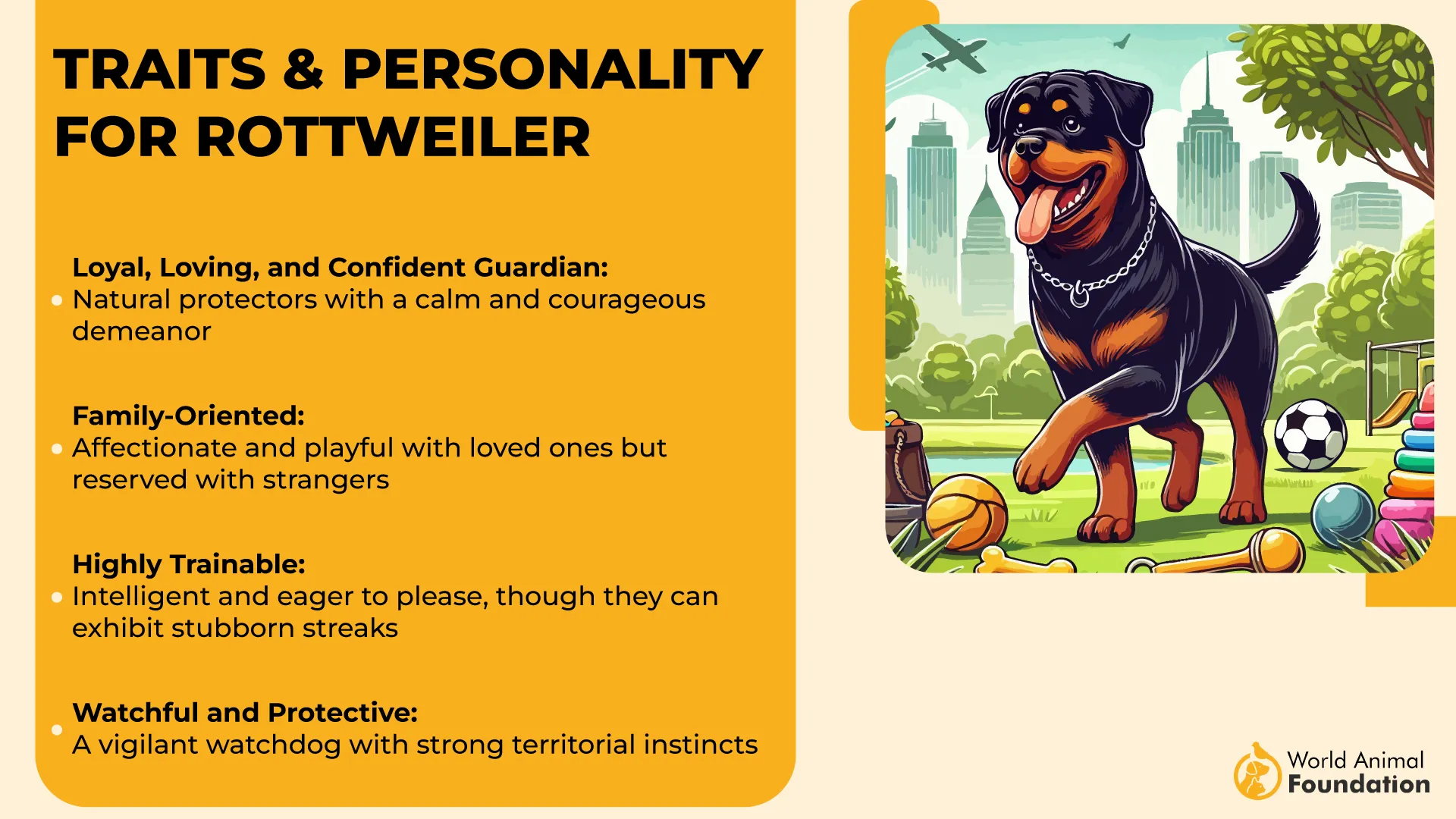
Ideal Owner
The Rottweiler is best suited for experienced dog owners who can commit to ongoing training, socialization, and leadership. These dogs thrive in households where structure, purpose, and mental stimulation are prioritized.
Ideal owners understand the importance of channeling the Rottie’s strength and territorial instincts through regular physical activity and firm guidance.
Fact: Rottweilers have historically served as rescue dogs, draft dogs, and even some of the earliest guide dogs for the blind.
8. Doberman Pinscher
Known for their sleek build and alert demeanor, Doberman Pinschers—sometimes simply called Dobermans—originated in Germany around 1890, developed by tax collector Louis Dobermann for personal protection.
They belong to the Working Group and have long earned respect as premier guard dogs. Males stand between 26 to 28 inches tall and weigh 75–100 pounds, while females are slightly smaller at 24 to 26 inches and 60–90 pounds.
Their coat is smooth and short, appearing in shades of black, blue, red, or fawn, often accented with rust markings. A well-bred Doberman combines elegance, power, and intelligence with an unmistakably noble presence.
Highly energetic and emotionally sensitive, the Doberman is not only swift and agile but also deeply loyal. Males are often more territorial, making them excellent property guardians, while females tend to be more people-focused, fiercely protective of their owners. With proper training and socialization, Dobermans can be affectionate companions and formidable protectors.
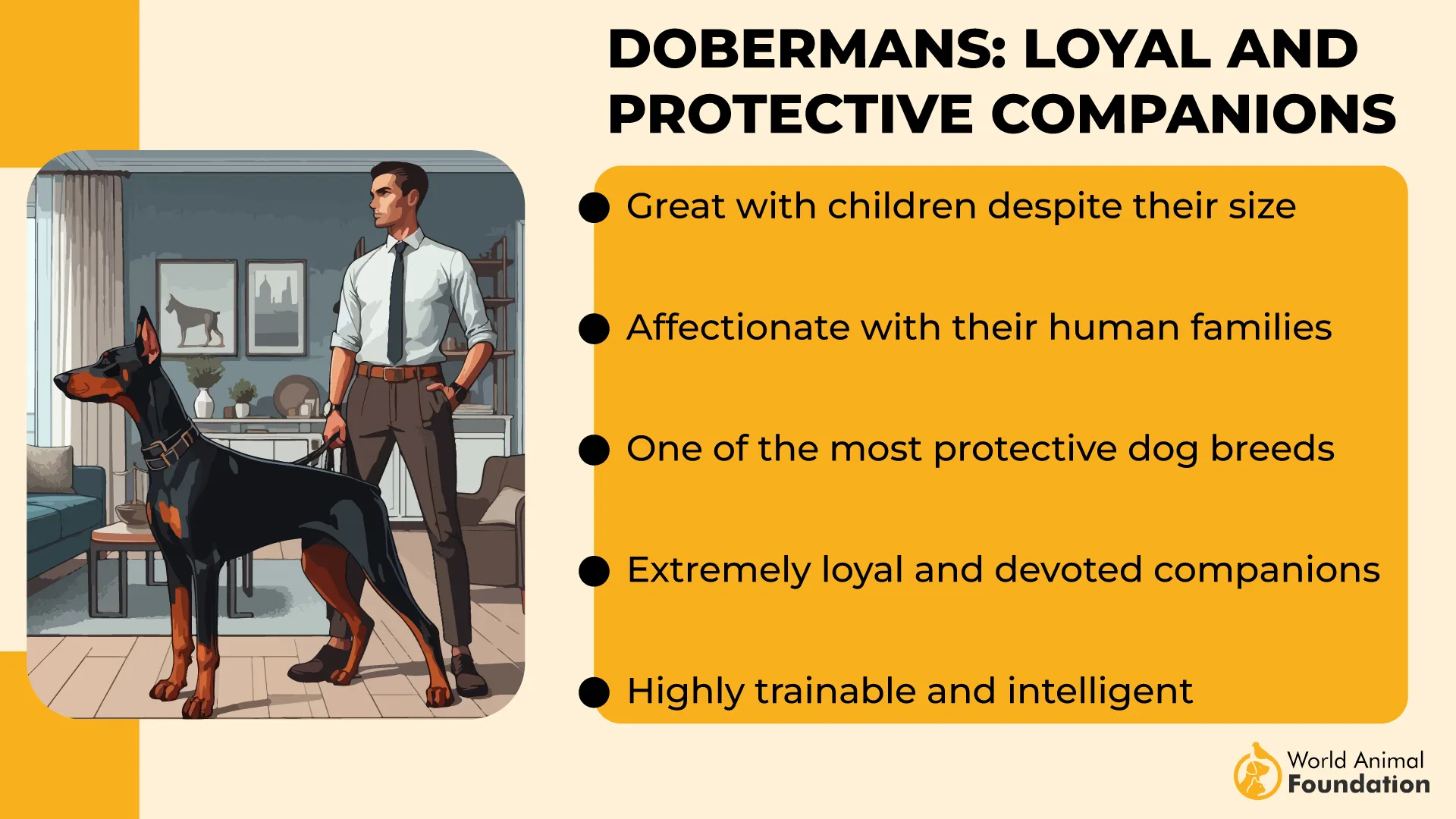
Ideal Owner
Dobermans thrive with experienced and confident owners who lead an active lifestyle. They need individuals who can provide consistent mental and physical stimulation, preferably those without very young children or other small pets. Their strong personality pairs best with handlers willing to commit to early obedience and ongoing structure.
Fact: Despite their intimidating look, many Dobermans can become excellent protectors with little to no formal training.
9. Tibetan Mastiff
Majestic and formidable, the Tibetan Mastiff—an ancient guardian from Tibet—is as watchful as it is powerful. They become excellent guard dogs. Originally bred to protect homes, livestock, and caravans across the harsh Himalayan landscape, this breed stands tall with a noble presence, dense double coat, and lion-like mane.
Males can reach up to 26 inches at the shoulder and weigh between 70 to 150 pounds. With a lifespan of 10 to 12 years, they come in deep shades like black, blue-gray, brown, and gold.
Despite their commanding size and aloof demeanor toward strangers, Tibetan Mastiffs are calm and loyal companions within their family circle. Classified in the Working Group, they are strong-willed, intelligent, and innately territorial.
Ideal Owner
These smartest breeds are best suited for experienced dog owners with firm leadership skills. Ideal guardians live in spacious homes with secure outdoor areas and can provide early socialization, consistent training, and firm boundaries.
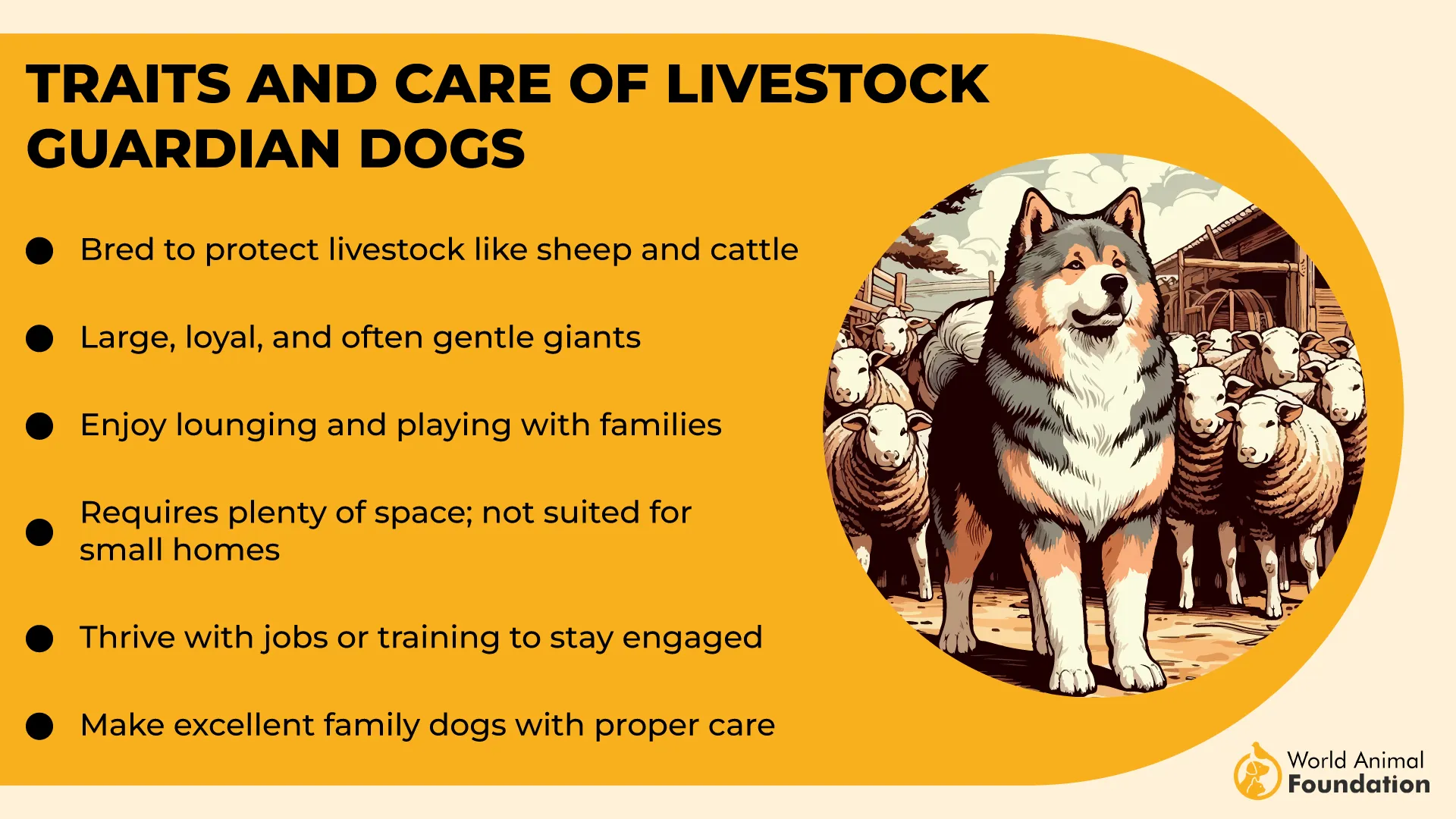
These dogs thrive with independent yet protective individuals or families who respect their need for autonomy and space, and who won’t expect lapdog behavior from this ancient sentinel.
Fact: Tibetan Mastiffs were historically used to guard entire villages and fend off predators like wolves and snow leopards.
10. Dogo Argentino
The Dogo Argentino, also known as the Argentine Mastiff or Argentinian Dogo, is a powerful working breed developed in 1928 by Dr. Antonio Nores Martinez in Cordoba, Argentina. Initially created by crossing several purebred dogs with the Cordoba Fighting Dog, the Dogo was designed for strength, stamina, and courage—ideal traits for hunting pumas and wild boars.
Males typically stand between 24 to 26.5 inches tall, while females reach 24 to 25.5 inches. They weigh around 80 to 100 pounds and belong to the Working Group. With a life expectancy of 9 to 15 years, the Dogo is known for its muscular frame, thick neck, and sleek, short white coat, occasionally marked by a dark eye patch called a pirata.
Though formidable in appearance, this protective dog breed is intensely loyal and affectionate with family. They make excellent guard dogs. Its alert expression and explosive athleticism make it a vigilant and responsive guard dog. Bred for both performance and protection, it demands physical activity and structured training to thrive.
Ideal Owner
This breed is best suited for experienced, active individuals or families with large, secure yards. Owners must commit to early training, socialization, and daily high-energy activities. It is not ideal for first-time dog owners or those in confined spaces.
Fact: The Dogo Argentino is the first and only breed from Argentina recognized by the Fédération Cynologique Internationale (FCI).
Conclusion
Choosing the best guard dog breed means balancing instinct, loyalty, and compatibility with your household’s lifestyle. While many breeds are instinctively protective, proper guard dog training can enhance their natural tendencies. Whether you’re seeking a watchdog for your property or a vigilant protector of your family members, understanding each breed’s temperament is key.
Some, like the Catahoula Leopard Dog, possess a naturally wary nature, making them excellent guardians. Others, such as the Australian Shepherd, combine intelligence and agility with a keen sense of alertness, perfect for active homes needing both a companion and protector.
Not all protective breeds are intimidating giants. Even medium-sized dogs with a loud bark and quick reflexes can effectively deter threats. Breeds like the Bernese Mountain Dog, though known for their gentle demeanor with family, are highly dependable and strong-willed when the situation demands. With thoughtful training and socialization, many breeds—whether raised alongside other dogs or in a solo setting—can become devoted guardians as well as beloved family companions.


